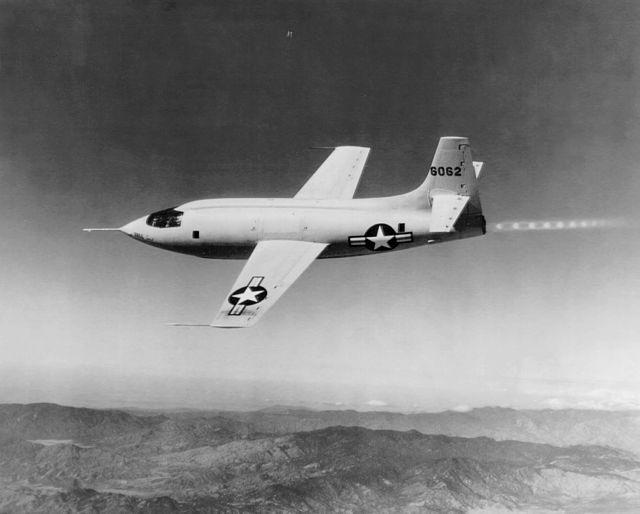McDonnell Douglas F-4 Phantom II
The McDonnell Douglas F-4 Phantom II is an American tandem two-seat, twin-engine, all-weather, long-range supersonic jet interceptor and fighter-bomber originally developed by McDonnell Aircraft for the United States Navy. Proving highly adaptable, it entered service with the Navy in 1961 before it was adopted by the United States Marine Corps and the United States Air Force, and by the mid-1960s it had become a major part of their air arms. Phantom production ran from 1958 to 1981 with a total of 5,195 aircraft built, making it the most produced American supersonic military aircraft in history, and cementing its position as a signature combat aircraft of the Cold War.
McDonnell Douglas F-4 Phantom II
The McDonnell F3H-G/H mockup, 1954
Key figures in the F-4 development: David Lewis, Robert Little, and Herman Barkey
An F4H-1F aboard Independence, April 1960
A supersonic aircraft is an aircraft capable of supersonic flight, that is, flying faster than the speed of sound. Supersonic aircraft were developed in the second half of the twentieth century. Supersonic aircraft have been used for research and military purposes, but only two supersonic aircraft, the Tupolev Tu-144 and the Concorde, ever entered service for civil use as airliners. Fighter jets are the most common example of supersonic aircraft.
The interaction of shock waves from two supersonic aircraft, photographed for the first time by NASA using the Schlieren method in 2019.
Bell X-1
A Lockheed SR-71 Blackbird supersonic reconnaissance aircraft
The fuselage of Concorde had an extremely high fineness ratio.








